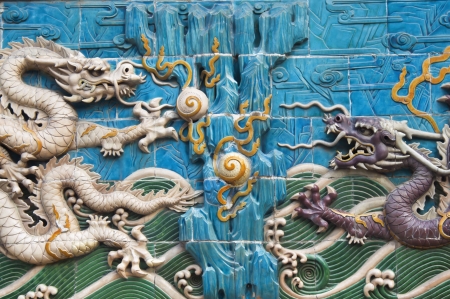1. Understanding the True Origins of Feng Shui
When most people in the United States hear the term “Feng Shui,” they might picture moving furniture to boost luck or buying special crystals for good vibes. However, these popular ideas often miss the deep and fascinating roots of this ancient Chinese practice. Let’s explore where Feng Shui really comes from and clear up some common misunderstandings about its history and journey into American culture.
The Ancient Beginnings of Feng Shui
Feng Shui, which translates to “wind” (feng) and “water” (shui), originated in China more than 3,000 years ago. It was developed as a way to harmonize people with their environment, based on careful observation of nature, geography, and astronomy. Early practitioners used it to decide where to build homes, tombs, and even entire cities to ensure health, prosperity, and happiness.
Common Myths vs. Historical Facts
| Myth | Fact |
|---|---|
| Feng Shui is just interior decorating. | It began as a science of land use and environmental harmony, not just home décor. |
| Feng Shui is religious or mystical. | While it has spiritual elements, it is grounded in observation and traditional Chinese philosophy. |
| Feng Shui only works in Asian cultures. | The principles are universal and have been adapted worldwide, including in American homes and offices. |
How Feng Shui Came to America
Feng Shui started appearing in the U.S. during the late 20th century as part of a growing interest in holistic living, wellness, and Eastern philosophies. Books, workshops, and television shows made the practice more accessible, but also led to some confusion about what Feng Shui really means. Instead of focusing only on aesthetics, true Feng Shui considers energy flow (chi), placement, light, and even time cycles.
The Western Take on Feng Shui
Today, you’ll find Feng Shui advice everywhere—from real estate listings that mention “good energy” to office layouts designed for productivity. While some adaptations simplify the practice for easy use in busy American lives, understanding its genuine history helps everyone make better choices for their spaces.
2. Separating Superstition from Science
Feng Shui is often surrounded by a mix of tradition, superstition, and modern design ideas. In the United States, some people see Feng Shui as an ancient mystical practice, while others are curious about its real-world benefits. Lets look at how science approaches Feng Shui and where cultural beliefs fit in.
What Is Superstition in Feng Shui?
Superstitions are beliefs or practices not based on scientific evidence. In Feng Shui, these might include ideas like certain objects bringing luck or arranging furniture to avoid bad spirits. While these beliefs can be meaningful in a cultural context, they dont have measurable effects that science can confirm.
Examples of Common Feng Shui Superstitions
| Superstition | Cultural Meaning | Scientific Support? |
|---|---|---|
| Placing a lucky bamboo plant brings wealth | Symbolizes growth and prosperity | No direct evidence |
| Avoiding mirrors facing the bed prevents bad luck | Belief in protecting energy during sleep | No scientific basis |
| Using red decorations attracts good fortune | Red is a color for happiness and success in Chinese culture | Color psychology shows some mood effects, but not luck |
Science and Environmental Psychology
Modern science, especially environmental psychology, studies how our surroundings impact our mood, productivity, and well-being. Some Feng Shui guidelines align with proven principles, such as maximizing natural light or reducing clutter for mental clarity. However, these benefits come from creating comfortable and organized spaces—not from mystical energies.
Key Differences Between Belief and Science
| Feng Shui Practice | Cultural Belief | Scientific Viewpoint |
|---|---|---|
| Arranging furniture to allow energy flow (“chi”) | Keeps positive energy moving in the home | Open layouts improve accessibility and reduce stress for many people |
| Avoiding clutter for better fortune | Clutter blocks good energy and opportunities | Tidy spaces help reduce anxiety and improve focus according to research |
| Choosing colors based on the five elements theory | Certain colors bring specific types of luck or harmony | Colors can affect mood; blue is calming, yellow is energizing, but no proven link to luck or fate |
The Takeaway: Harmony Between Culture and Science
You dont have to choose between tradition and science. Many Americans enjoy using Feng Shui as a way to connect with culture or personalize their space. Just remember that while some practices may offer psychological comfort or practical benefits, not all claims are backed by scientific evidence. Focusing on what makes you feel comfortable at home is always a smart move.

3. Feng Shui in American Homes: Fact vs. Fiction
Understanding How Feng Shui is Practiced in the US
Feng Shui has become a popular concept in many American homes, but there are still plenty of myths and misunderstandings about what it really is and how it works. Let’s break down some of the most common misconceptions and uncover what’s actually true.
Myth #1: Feng Shui Means Buying Expensive Asian Decor
A lot of people think practicing Feng Shui means filling your home with Chinese statues, bamboo plants, or wind chimes. In reality, Feng Shui is more about balance, flow, and thoughtful arrangement than any specific type of decoration. You don’t need to buy special objects; instead, focus on creating a space that feels comfortable and organized to you.
Myth #2: Feng Shui Only Works If You Follow Every Rule
Some believe that if you don’t place your furniture at exact angles or if you skip a step, Feng Shui won’t work. But the truth is, Feng Shui principles are flexible. They’re meant to guide you toward harmony and comfort, not stress you out with strict rules.
Myth #3: Feng Shui Will Instantly Change Your Life
Another common myth is that rearranging your home will bring immediate luck or wealth. While a well-arranged space can improve your mood and productivity, it isn’t magic. The real benefit comes from creating a home environment that supports your well-being over time.
Fact vs. Fiction: Common Beliefs About Feng Shui in America
| Belief | Fact or Fiction? | The Truth |
|---|---|---|
| You must use traditional Chinese decorations | Fiction | Your personal style matters more than tradition. Use what makes you feel good! |
| Every room needs a water fountain for good energy | Fiction | Water features can help, but theyre not required. Cleanliness and order are more important. |
| Feng Shui is only about furniture placement | Fiction | It also considers lighting, color choices, and even how you use each room. |
| You have to completely remodel your home to practice Feng Shui | Fiction | Small changes like clearing clutter or adjusting lighting can make a big difference. |
| Feng Shui works best when customized to the homeowners needs | Fact | The most successful Feng Shui adapts its principles to fit your lifestyle and preferences. |
Practical Tips for Applying Real Feng Shui Principles at Home
- Start Small: Begin by decluttering and cleaning your space.
- Let in Natural Light: Open curtains and use mirrors to brighten up dark areas.
- Create Flow: Arrange furniture so it’s easy to move around each room without obstacles.
- Add Personal Touches: Choose colors and decorations that make you feel happy and relaxed.
The Bottom Line on Feng Shui in America
If you want your home to feel calm and inviting, focus on balance, order, and what feels right for you—not just following trends or buying certain products. True Feng Shui is about making your living space work for your unique lifestyle.
4. Cultural Adaptations and Misinterpretations
Feng Shui has made its way into American homes, offices, and even pop culture. However, the journey from its ancient Chinese roots to mainstream America hasn’t always been smooth. Many practices have been adapted—or sometimes misrepresented—to fit Western lifestyles and beliefs. Let’s explore how Feng Shui has evolved in the U.S., what’s often misunderstood, and which elements remain true to its origins.
How Feng Shui Has Been Adapted in America
In America, Feng Shui is often seen as a way to create harmony and attract good energy by rearranging furniture or adding certain colors. While these ideas are inspired by traditional principles, the original practice is much deeper. Traditional Feng Shui involves detailed calculations, compass readings (Luo Pan), and considers natural surroundings as well as architecture.
| Traditional Feng Shui | American Adaptation |
|---|---|
| Uses compass directions for precise analysis | Focuses on general “bagua” map placement |
| Considers landscape, building orientation, and time cycles | Mainly rearranges furniture indoors for “good vibes” |
| Includes remedies like water features or specific materials based on calculations | Adds lucky objects or plants without deep analysis |
Common Misinterpretations in Pop Culture
Many TV shows, magazines, and online articles simplify Feng Shui to quick fixes—like putting a red pillow in your living room for wealth or hanging mirrors to reflect negative energy. While some of these tips are loosely based on real concepts, they lack the comprehensive approach that traditional Feng Shui uses. The true practice is personalized and involves understanding each person’s environment and needs.
Misconceptions vs. Authentic Practice
| Misconception | Reality in Traditional Feng Shui |
|---|---|
| “Feng Shui is just about moving furniture.” | It includes site selection, design, timing, and personal energy alignment. |
| “Any object with red color brings luck.” | The use of colors depends on an individual’s birth chart and home direction. |
| “Mirrors always deflect bad energy.” | Improper mirror placement can actually worsen energy flow if not used correctly. |
What Remains True to Its Origins?
Despite many changes, some core ideas have stayed the same:
- The goal is harmony: Both traditional and modern practices seek balance between people and their surroundings.
- The importance of intention: Whether you’re using classical methods or simple arrangements, intention matters.
- The influence of environment: Recognizing that our spaces impact our well-being is at the heart of both traditions.
5. Practical Tips Beyond Myths
Feng Shui isn’t just about ancient rituals or mysterious symbols—it’s about creating a comfortable, supportive environment that feels good to you and your family. Let’s explore some straightforward and culturally relevant Feng Shui tips for American homes that go beyond common myths.
Easy Ways to Bring Feng Shui Into Your Everyday Life
Forget the outdated idea that you need special objects or a total home makeover. These simple steps can make your space feel more balanced and welcoming:
Myth |
Authentic Tip |
How It Works in Your Home |
|---|---|---|
| Only traditional Chinese items create good Feng Shui. | Use what you love and what makes sense for your lifestyle. | Display art, photos, or décor that brings you joy—whether it’s a family photo, an American landscape, or a favorite piece of local art. |
| You must follow strict rules about furniture direction. | Aim for comfort, clear movement, and safety. | Place your bed so you can see the door without being directly in line with it. In living rooms, arrange seating to encourage conversation and easy flow. |
| Feng Shui requires expensive crystals or coins. | Keep your space tidy and organized. | Regularly declutter countertops, entryways, and high-traffic areas. A clean space supports positive energy (or “qi”) no matter where you live. |
| Certain colors are mandatory for each room. | Choose colors that feel calming and inspiring to you. | If blues help you relax in the bedroom or sunny yellows brighten your kitchen, trust your instincts over any strict color charts. |
Practical Feng Shui for American Living Spaces
- The Entryway: Keep this area well-lit and free from clutter. This is where energy enters your home—think of it as making a great first impression for both guests and good vibes.
- Your Workspace: Whether it’s a home office or a small desk, face the entrance if possible so you feel secure and aware of what’s happening around you. Add a plant for fresh energy and a touch of nature.
- Restful Bedrooms: Use soft lighting and avoid storing things under the bed. This helps create a peaceful space for rest—no need for exotic objects or complicated arrangements.
- Lively Living Rooms: Arrange furniture so people can easily talk and move around. If possible, let in natural light by opening curtains during the day.
Blending Tradition With Modern Life
You don’t need to follow every old rule or buy anything special to benefit from Feng Shui. Focus on how your space feels: Does it support how you want to live? Do you feel comfortable there? Authentic Feng Shui is about making your home work for you, blending tradition with modern practicality—right here in America.


